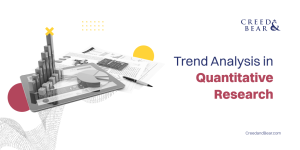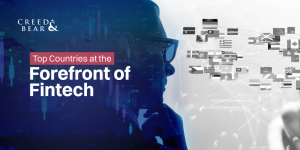The world of finance comprises a myriad collection of assets and derivative products that investors hold in high regard. Among these, investors consider several assets fundamental, undergirding our current financial landscape.
This blog briefly overviews these assets and their role as building blocks of the current global economic realm.
Equities: The Cornerstone of Investment
Equities, otherwise known as stocks, represent ownership in a publicly traded company. Investors view this asset class as the financial backbone of the modern economy, symbolizing corporate growth and success. According to the Securities Industry and Financial Markets Association (SIFMA), global equity market capitalization reached $101.2 trillion in 2022. The United States equity markets represent the lion’s share of the worldwide total at $46.2 trillion, equivalent to 42.5%.
Historically, traders and long-term investors have attained substantial growth and success through equities. In financial markets, investors look at indexes such as the Dow Jones Industrial Average (DJIA) or the Standard and Poor’s 500 (S&P 500) to monitor the performance of this asset class, primarily in the United States. Just as it has in the past, equities will continue to serve as a primary representation of progress and development in the world.
Bonds: The Stabilizing Force
Bonds are debt instruments directly issued by governments, cities, and large corporations. These financial assets have performed stably throughout history. Thus, portfolio diversification strategies often involve a degree of bond exposure.
With the global bond market totaling $133 trillion in 2022, this asset class remains vital to building a robust and well-rounded portfolio. Investors monitor the performance of bonds against economic fluctuations and interest rate trends. More specifically, the historical yield curve of bonds lends insight into the effectiveness of government monetary policies. In periods of uncertainty, bonds provide a level of dependability vital to mitigating risks in financial markets.
Commodities: The Link to the Real World
Before the era of financial markets, stocks, and other financial derivatives, doing business involved trading various physical goods with other traders. Today, this has taken the alternative form of commodities trading, and it remains one of the most critical sectors of the global economy.
According to the World Trade Organization (WTO), the global commodity trade market increased by 12% in 2022, reaching $25.3 trillion. This reflects commodities’ heightened and sustained importance to the global economy, with futures markets capturing their fluctuating dynamics.
Foreign Exchange: The Currency Web
Foreign exchange is the world’s largest financial market, with global trading volume peaking at $7.5 trillion a day in 2022, as reported by the Bank for International Settlements. It reflects the strength of a nation’s economy relative to that of other nations. A currency’s exchange rate indicates the robustness of the country’s monetary policy. The health of its international trade. And the strength of its positioning in relation to the larger geopolitical landscape. Over time, currencies will continue to fluctuate, allowing traders to capitalize on opportunities and profit from well-timed trades.
The Importance of Fundamentals
These fundamental assets provide the foundation for traders to build their unique trading strategies. With a solid grasp of these assets and their interoperability within the global economy, traders can make informed decisions. And execute trades with the big picture in mind. At Creed&Bear, our team of in-house experts leverages years of experience in financial markets to deliver algo trading solutions. These solutions integrate intelligent exposure to select assets that are tailored to our client’s risk profiles. To know more about our company and cutting-edge solutions, follow us on social media or visit our website here.
Disclaimer
AI Usage: This article was initially drafted with the assistance of artificial intelligence and subsequently edited to ensure originality and avoid plagiarism. However, in the event that the content inadvertently resembles other works, we do not assume responsibility for any unintentional overlaps or similarities. We invite readers to notify us of any such resemblances so that we can make the necessary modifications in respect and consideration of other authors and brands.
Finance and Trading: The insights and opinions expressed in this blog post concerning trading and market are solely those of the author and should not be interpreted as financial advice. This content is for informational purposes only and does not constitute recommendations or endorsements for any specific investments, securities, or financial strategies. Readers should conduct their own research or consult with a financial professional before making any investment decisions.





